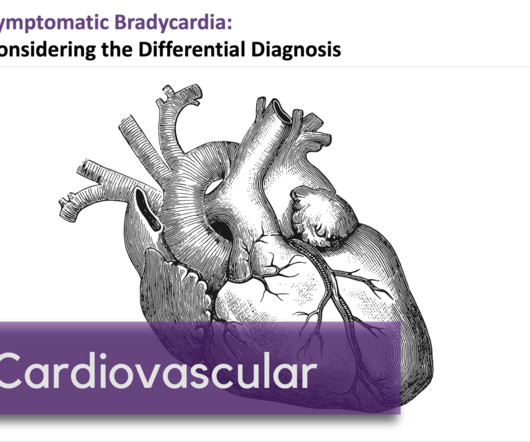Symptomatic Bradycardia: Considering the Differential Diagnosis
Northwestern EM Blog
JUNE 16, 2024
The most common symptoms include: Lightheadedness Syncope Chest pain Exercise intolerance Fatigue **Important note: The heart rate at which patients experience symptoms may vary based on their ability to increase stroke volume. Hypothermia Moderate to severe hypothermia can cause significant bradycardia leading to hypotension.














Let's personalize your content